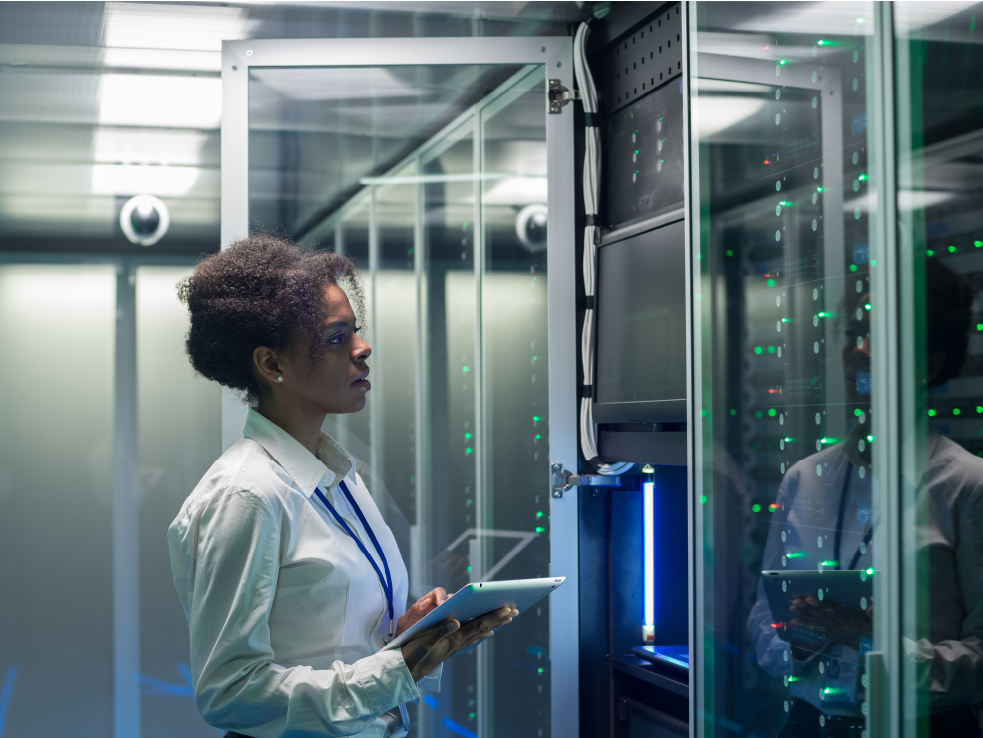How can cloud-connected workspaces improve your employee experience?:
Give your employees a digital experience that gives your business a distinct edge

Cloud-connected workspaces bring flexibility to your work environment, letting employees work anytime, anywhere, using any device, with personalized on-demand support. Organizations can provide more flexible working environments for their employees, allowing workers to be productive regardless of where, when, and how they choose to work.
So, what is a cloud-connected workspace? Simply put, it is a work environment that provides employees with access to their own applications, files, and services located in the cloud. It can fully replace local desktop workspace capabilities and settings previously only available through conventional network connections or secure channels.
Meet the needs of your end users
With today’s pace of business, it is critical for organizations to be able to adapt to changing market conditions and internal changes such as mergers, acquisitions, and new business ventures. These demands require businesses to almost instantaneously create infrastructure to meet the needs of their end users and customers. The traditional model for IT provisioning and allocation, though successful, has slowed growth for many.
Leveraging cloud-connected workspaces can help your distributed workforce become more engaged and more productive. Supplying the right technology and the right training will ensure your employees are operating at their full potential.
Find the proper balance
Adopting a new product type is no trivial task for IT and typically requires many hours of testing and qualifying. The evolution of the cloud PC has accelerated the move to multiplatform for many organizations. IT complexity can be greatly reduced by centralizing app and desktop management and automating common tasks. A cloud-first strategy frees up your technology team’s time and budget by simplifying application, desktop, and data management. The right cloud service can also boost IT agility with shorter setup time and an always up-to-date SaaS delivery model.
When it comes to balancing end-user experience and IT delivery, common organizational hurdles include:
- Spiraling costs. Managing the budget for distributed endpoint devices, ongoing hardware support, and regular replacement is not cheap.
- Logistics. Securing a combination of corporate and BYOD devices is challenging, as is endpoint management and building a team to manage a secure desktop environment.
- Compliance. Industry standards are driving data to secure and centralized locations.
But no matter what challenges your business may face in supporting a distributed workforce, SHI has got you covered.
How to get started
Having a plan of action that aligns with clearly defined business objectives is critical when creating a cloud-connected workspace. Many organizations have wasted precious time and resources trying out platforms focused on meeting specific needs of a subset of users, only to find that unforeseen changes disrupt the original plans. SHI recommends starting by defining a set of organizational goals that include people, process, and technology.
A modern end-user strategy should support seamless access regardless of user location. A zero trust initiative must be accounted for, while simultaneously improving the user experience.
SHI’s typical approach is to help evaluate your current desktop strategy and devise a workable plan of action for maturing your desktop posture. We begin this process with a 90-minute workshop during which SHI’s field CTOs will help you identify requirements and success criteria to further define an appropriate lifecycle management strategy for your users. SHI’s long-standing strategic partner relationships allow us to point out architectural and platform-specific nuances while providing a vendor-neutral perspective.
Once your key stakeholders review the initial findings, we follow up with a deeper assessment that shows the associated cost savings that can be achieved by transforming how you support your end users.
There are a lot of aspects to consider when defining a future-proof end-user strategy that strikes the desired balance between user experience, productivity, and security. SHI’s ridiculously helpful resources are here to complement your internal resources and set you up for success.
For more information or to schedule an Executive Briefing about your cloud strategy, contact us today!




